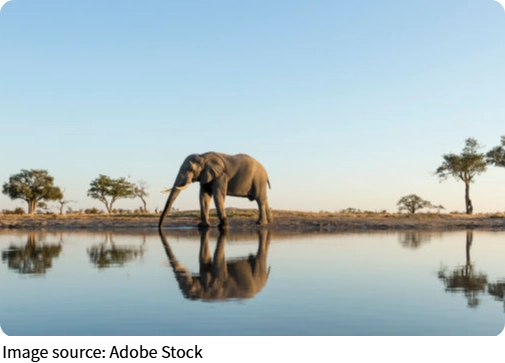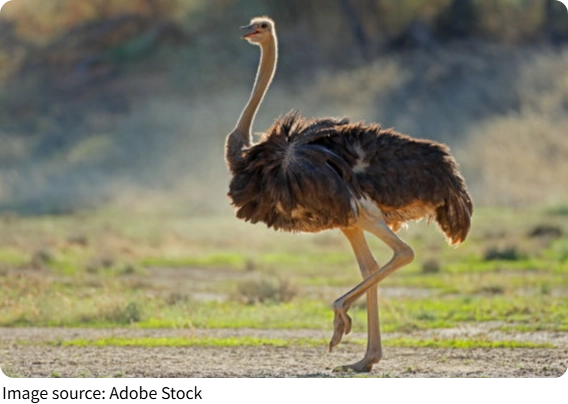The Kalahari Desert

Exploring the vast and captivating Kalahari Desert reveals one of southern Africa's most extraordinary natural landscapes.
Spanning approximately 900,000 square kilometers across Botswana, Namibia, and South Africa, this desert defies common assumptions about arid regions.
With its striking red sands, diverse wildlife, and unique ecosystems, the Kalahari offers an unforgettable experience for nature lovers and adventurers alike.
For all Lykkers seeking a blend of stunning scenery and rich biodiversity, the Kalahari presents an exceptional destination full of surprises.
Geographical Setting and Landscape
The Expansive Kalahari Region
The Kalahari stretches across multiple countries, creating a vast terrain characterized primarily by red sandy plains and ancient dunes. Despite its reputation as a desert, it is not an entirely barren place.
Instead, it hosts a complex environment with savannas, woodlands, and seasonal wetlands. The sands owe their distinctive red color to iron oxide, which also gives the dunes a warm glow, especially at sunrise and sunset.
The Makgadikgadi Pans: A Unique Salt Landscape
Situated within the Kalahari Game Reserve in Botswana, the Makgadikgadi Pans are massive salt flats that were once part of a prehistoric lake. These pans are among the largest salt flats worldwide and shift dramatically with the seasons.
During dry months, the landscape resembles a bright, lunar surface. However, after rains, the pans come alive, attracting large numbers of migrating animals such as zebras and wildebeests, making it an important area for observing wildlife in transition.
Climate and Ecosystem
Seasonal Changes and Water Availability
The Kalahari experiences distinct seasonal variations. Summers bring warmer temperatures and most of the region's rainfall, which temporarily transforms parts of the desert into green, vibrant habitats.
Winters tend to be cooler and dry, often accompanied by clear skies. Despite the rains, permanent surface water is scarce, making water a precious resource that shapes the behavior and survival strategies of both plants and animals.
Adapted Flora in a Harsh Environment
Vegetation in the Kalahari is remarkably resilient, consisting of plants adapted to conserve moisture and thrive under arid conditions. Acacia trees with deep root systems tap underground water sources to endure long dry spells. Grasses and thorny shrubs minimize water loss through specialized leaf structures.
Succulent plants such as aloe species and the Hoodia cactus store water in their thick leaves, allowing them to bloom spectacularly after rains. Additionally, the tsamma melon grows wild here and serves as a vital water source for many desert animals during dry periods.
Wildlife and Biodiversity
Adaptations of Desert Animals
The Kalahari supports an impressive array of animal species that have evolved to flourish in its challenging environment. Predators like lions with dark manes, leopards, and cheetahs coexist alongside herbivores such as springboks, oryxes, and various antelope species.
Many animals are nocturnal hunters to avoid daytime heat, while others have developed efficient ways to conserve water. Reptiles, including multiple snake and lizard species, add to the ecosystem's complexity, along with a rich variety of insects essential for pollination and nutrient cycling.
Iconic Wildlife Experiences
Visitors can often witness unique animal behaviors, including large-scale migrations to the Makgadikgadi Pans during the rainy season, or observe the social dynamics of meerkats and other desert dwellers. The diverse habitats within the desert—from grassy plains to shrublands—allow for varied wildlife sightings.
Human Presence and Cultural Heritage
The San People: Traditional Custodians
The Kalahari is home to one of the oldest indigenous groups known for their intimate knowledge of the land—the San people. Skilled in tracking and survival, they have lived in harmony with this environment for thousands of years.
Their traditions, including storytelling and rock art, provide valuable insights into the deep connection between people and nature in this region.
Visiting the Kalahari Desert
How to Reach the Kalahari
The main gateway to the Kalahari is through cities such as Maun or Gaborone in Botswana. From there, guided tours or self-drive safaris provide access to various parts of the desert. The closest international airports serve these cities, making them convenient starting points for travel.
Tour Options and Average Costs
Tours range from day trips to multi-day safaris and can include game drives, walking excursions, and cultural visits with local communities. Average prices vary depending on the length and type of tour but expect around $150 to $400 per day for guided safaris with accommodation and meals included. Many operators offer packages that combine wildlife viewing with visits to the Makgadikgadi Pans.
Accommodation Near the Kalahari
Options include lodges, campsites, and luxury tented camps located near key wildlife areas. Prices per night typically range from $80 for basic camping to $300 or more for upscale lodges featuring amenities such as guided tours and meal services. Booking in advance is recommended, especially during peak seasons when wildlife activity is high.
What to Expect
Landscape and Wildlife Highlights
Visitors can anticipate breathtaking views of red dunes, expansive salt pans, and vibrant wildlife encounters. The changing seasons create varying experiences—from dry, open desert scenes to lush, wildlife-rich habitats after rains.
Climate Considerations
Due to temperature swings between day and night, packing layered clothing is advisable. The dry air can be dehydrating, so adequate water and sun protection are essential.

Final Thoughts
The Kalahari Desert stands as a remarkable example of nature's resilience and adaptability. Far from being a mere expanse of barren sand, it is a living ecosystem teeming with life and cultural heritage.
For Lykkers eager to explore an authentic African wilderness, the Kalahari offers a captivating blend of wildlife, stunning landscapes, and deep-rooted traditions. Preserving this natural treasure remains vital, ensuring future generations can continue to experience its unique beauty and ecological importance.
-
 The Chocolate IslandDiscover the Secret Paradise Where Chocolate Grows Wild and Adventure Awaits!
The Chocolate IslandDiscover the Secret Paradise Where Chocolate Grows Wild and Adventure Awaits! -
 Music for MomentsLet's explore how the right soundtrack can enhance the atmosphere and mood of any situation.
Music for MomentsLet's explore how the right soundtrack can enhance the atmosphere and mood of any situation. -
 2025's World Population DayA powerful reminder to act for equality, health, and sustainability as our world grows.
2025's World Population DayA powerful reminder to act for equality, health, and sustainability as our world grows.